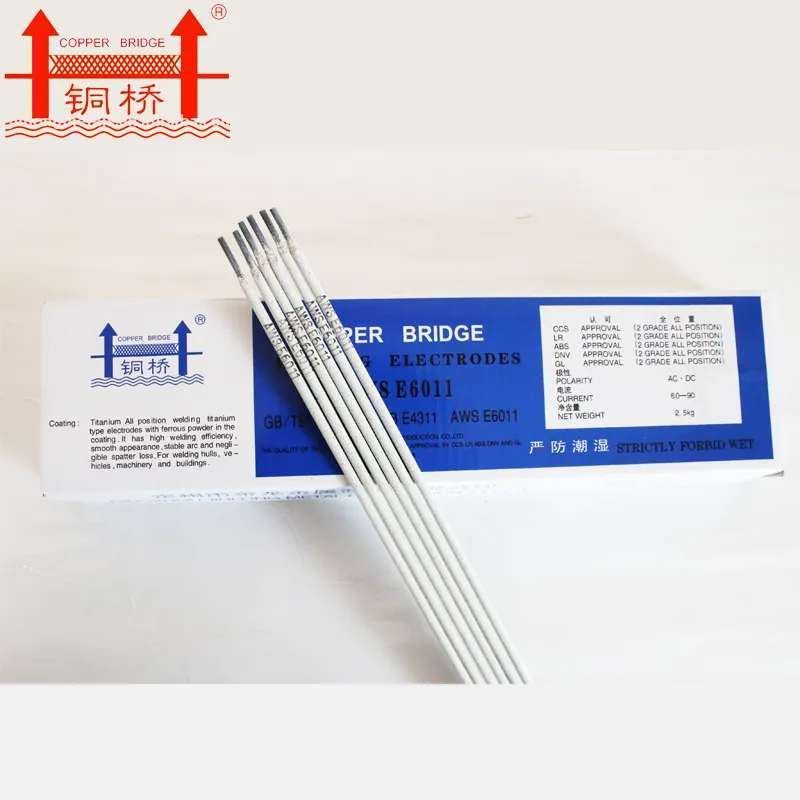ss to ss welding rod
Feb . 14, 2025 08:49
Stainless steel to stainless steel (ss to ss) welding rods are a critical component in the fabrication and repair of stainless steel structures. The growing demand for stainless steel in various industries necessitates a deep understanding of the welding products used in its assembly. This article delves into the unique attributes of ss to ss welding rods, essential for professionals in fields ranging from construction to automotive manufacturing.
In practical terms, professionals often rely on stainless steel welding rods such as ER308L, ER316L, and ER309L, among others. ER308L is commonly used for welding similar grades of stainless steel, ensuring a low carbon content to prevent carbide precipitation. ER316L is preferred for its superior chloride corrosion resistance, making it suitable for marine environments. ER309L, meanwhile, is typically used when joining dissimilar metals, providing stability across varying expansion rates. The manufacturing process of ss to ss welding rods is another critical aspect contributing to their effectiveness. High-quality rods are manufactured under stringent controls to ensure consistency in size and chemical composition. This consistency is paramount, as even minor deviations can affect the welding outcome, leading to weak joints or increased corrosion susceptibility. As professionals in the welding industry recognize, the marketplace is awash with products that claim superior performance. However, ensuring the procurement of high-quality ss to ss welding rods involves due diligence, including reviewing certifications and, where possible, undertaking trials to assess compatibility with specific welding projects. Leading manufacturers often subject their products to rigorous quality assurance protocols, which serve as a testament to their reliability and performance. In conclusion, ss to ss welding rods are an indispensable resource in crafting durable and resilient stainless steel structures. The expertise in selecting, handling, and applying these rods can significantly influence the lifecycle and safety of the final product. Professionals need to remain informed and vigilant, embracing technological advancements and material innovations that enhance welding efficacy. Through a detailed understanding of their properties, and pragmatic approaches to their application, industries can unlock the full potential of stainless steel, ensuring the longevity and safety of their projects.


In practical terms, professionals often rely on stainless steel welding rods such as ER308L, ER316L, and ER309L, among others. ER308L is commonly used for welding similar grades of stainless steel, ensuring a low carbon content to prevent carbide precipitation. ER316L is preferred for its superior chloride corrosion resistance, making it suitable for marine environments. ER309L, meanwhile, is typically used when joining dissimilar metals, providing stability across varying expansion rates. The manufacturing process of ss to ss welding rods is another critical aspect contributing to their effectiveness. High-quality rods are manufactured under stringent controls to ensure consistency in size and chemical composition. This consistency is paramount, as even minor deviations can affect the welding outcome, leading to weak joints or increased corrosion susceptibility. As professionals in the welding industry recognize, the marketplace is awash with products that claim superior performance. However, ensuring the procurement of high-quality ss to ss welding rods involves due diligence, including reviewing certifications and, where possible, undertaking trials to assess compatibility with specific welding projects. Leading manufacturers often subject their products to rigorous quality assurance protocols, which serve as a testament to their reliability and performance. In conclusion, ss to ss welding rods are an indispensable resource in crafting durable and resilient stainless steel structures. The expertise in selecting, handling, and applying these rods can significantly influence the lifecycle and safety of the final product. Professionals need to remain informed and vigilant, embracing technological advancements and material innovations that enhance welding efficacy. Through a detailed understanding of their properties, and pragmatic approaches to their application, industries can unlock the full potential of stainless steel, ensuring the longevity and safety of their projects.
Related Video
Copyright © 2025 Dingzhou Jinlong Metal Production Co., Ltd. All Rights Reserved. Sitemap | Privacy Policy




























